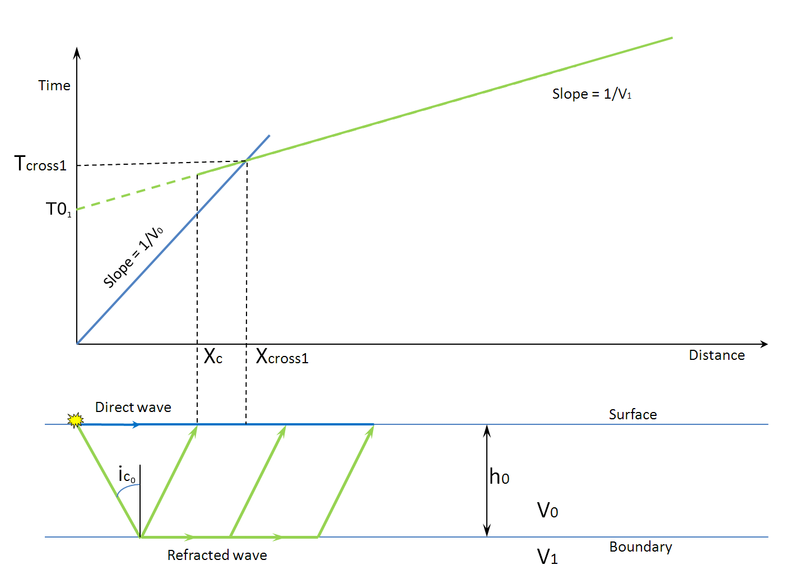Seismic refraction

Seismic refraction is a geophysical principle governed by
Seismic refraction is exploited in
The methods depend on the fact that seismic waves have differing velocities in different types of soil or rock. The waves are refracted when they cross the boundary between different types (or conditions) of soil or rock. The methods enable the general soil types and the approximate depth to strata boundaries, or to bedrock, to be determined.
P-wave refraction
P-wave refraction evaluates the
S-wave refraction
S-wave refraction evaluates the
Two horizontal layers

ic0 - critical angle
V0 - velocity of the first layer
V1 - velocity of the second layer
h0 - thickness of the first layer
T01 - intercept
Several horizontal layers
Inversion methods
- The General Reciprocal method
- The Plus minus method
- Refraction inversion modeling (refraction tomography)
- Monte Carlo simulation
- Genetic algorithms
Applications
Seismic refraction has been successfully applied to tailings characterisation through P- and S-wave travel time tomographic inversions.[1]
See also
References
This article includes a list of general references, but it lacks sufficient corresponding inline citations. (April 2009) |





